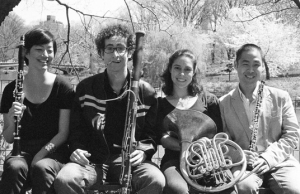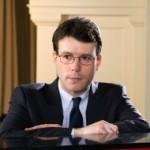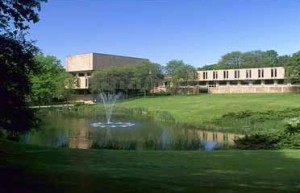
Clarice: So, ahem, Nadia it was pretty remarkable when we switched from reading from the score to parts when we were working on Hayes’ piece (ed.: Steal Away by Hayes Biggs). It’s like the music took on a different meaning.
Nadia: I know!! I find that stuff so incredible. Sometimes I forget that a massive portion of our jobs as musicians (especially of the new music persuasion) is essentially translating visual material into sound. We’re kind of like professional map-readers. Do you have any notational pet peeves?
Clarice: Page turns of course… But other than that, just spacing in general. If notes look all bunched up, then it’s hard not to make them sound that way! What about you?
Nadia: My super-dork pet peeve is spelling; I hate it when chords are spelled out in ways that have little regard for traditional chord structures. It’s sometimes really hard to wrap your brain around a whole bunch of sharps and flats living together all higgledy-piggledy without regard for implied harmony. I know I know: super-dork. That having been said, I kind of love how notation is a kind of personal, no two alike sort of thing. It gives the performer so much insight as to how the composer may be thinking. Oh! And I can get kinda frustrated with things that are notated with very small durations (64th and 128th notes) which are then in a super-slow tempo. I understand a kind of freneticism may be what the composer is going for, but it just seems to add so much time to the rehearsal/parsing process.
Clarice: Totally agree on that one. Pretty amazing how this abstract system of symbols and lines and dots can be subject to so much scrutiny and discussion regarding interpretation. And how dots and lines paired with scrutiny and discussion results in beautiful music! Amazing!
Nadia: Yay! So, I’ve been thinking a lot lately about the type of music and programming that translates well live vs. that which is great to listen to on the radio or on a recording. There are so many types of gestures which are fascinating to watch people achieve, which cannot be really understood in a recording. Like even a pregnant pause, for example.
Clarice: For sure – the physicality of achieving a musical gesture just can’t be heard in a recording, and sometimes seeing that gesture is what makes the music translate to the audience. However, would you say that there is any music that makes more sense recorded rather than live? What about music in the rock/pop world?
Nadia: Oh decidedly. Stylistically that’s an idea Classical peeps kind of “borrowed” from the pop world to begin with, even going so far back as Musique Concrète territory. Like, think about how many times we’ve heard the exact same performance of a song like “Louie Louie.” That performance IS the work itself. Everything else is a “cover.” This can seem like a weird, alien counterpart to the Classical model (like, do I only do covers???), but yeah, there’s a lot more of that type of thinking these days, from things like John Adams Light Over Water to Nico Muhly’s The Only Tune, a piece I’ve performed a lot. When that piece was conceived it was as a recorded collage. When we play it, we are trying our damnedest to approximate the recording. It’s sort of the opposite type of problem from what we were talking about above, the “why does this music lack the visceral impact it had live on this record” type of problem.
Well, I’m super into the diversity of voices on this program. I get to wear a lot of different hats! (Jagged hat, lyrical hat.)
Clarice: Yes, I think the variety of pieces we ended up with is pretty emblematic of the wide range of excellent writing and composition that’s happening now. And as a performer, it really is rewarding to wear all of these hats! I mean, I’ve always considered lyrical playing to be a personal strength of mine, but over the years I’ve worked so hard on rhythmic accuracy through playing intricate music, and now I consider that to be a strength as well. It’s amazing how all of this diverse writing is in fact shaping the performers who are often playing music in the contemporary world. Do you think your focus on new music has changed you intrinsically as a performer?
Nadia: Oh, totally. Whenever you work on some weird skill, it changes the kind of mental space in which you think about everything else, really. The rhythmic idea you bring up is super apropos; I also kind of came from a lyrical place as a kind of a default, but the more I work on concepts of groove and flow, the more these ideas end up creeping their way into even the most lyrical stuff. Knowing more things as time goes on rules.
Well, lovely to chat with you, C, I can’t wait for the show!!
Clarice: Yep yep, it’s gonna be a good one!
_______________________
Tickets to the Sequenza 21 Concert are free (the venue charges a $12 food/drink minimum).
October 25 at 7 PM
Joe’s Pub in NYC
Tickets and Tables are still available by phone.
Call 212.539.8778 to make your reservation








